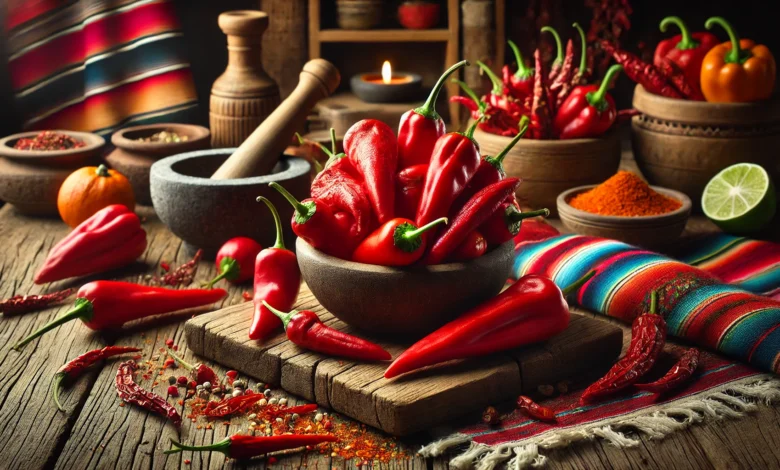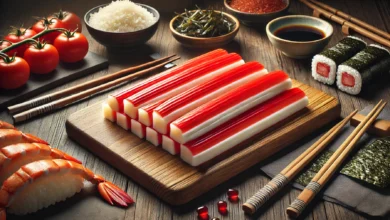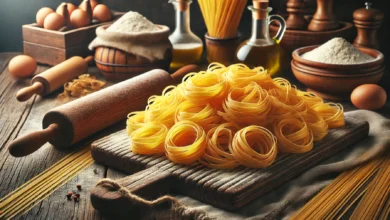Chile de Árbol: The Fiery Secret of Mexican Cuisine

Introduction
Chile de Árbol is a small, yet mighty Mexican chili pepper with a thin and straight shape and an extremely pungent taste. Being 2-3 inches in length and 0. 26-0. 39 inches wide, it ranges from 15,000 to 30,000 Scoville units of heat. These peppers start green, ripen to bright red, and people sell them fresh, dried, or powdered.
Are you looking to give your cooking a much needed boost? Understand how Chile de Árbol. Messaging how it can enhance your meals and make them spicy.
It is a staple of Mexican cuisine, the people love the spicy mix and beautiful red color. This small chili pepper is versatile and perfect for use in almost every recipe beginning from salsas to soups, for those who can handle with spices. Chile hails from the Mexican states of Jalisco and Oaxaca, and it much more than hot; it comes with an astonishing taste of smoky and nutty tones. Whether you use the pepper fresh, dried, or powdered, it can revolutionize your cooking and thrill your taste buds.
The Origins of Chile: A Spicy Tradition
It grew in the Mexican regions of Jalisco and Oaxaca with the community exploiting its culinary uses for generations. Unlike its close cousins, the Chile got its name from the Spanish word “Chile,” which in English translates to Chili, which is further complimented by its tree-like form because in Spanish it is literally called “Chile del Árbol,” the word for tree chili. It is grown in such regions specifically for its hot taste and flavor, thus widely used in Mexican foods. Mexican kitchens love this tablespoon because of its history, availability, and tradition.
Understanding the Heat: The Scoville Scale
Chile de Árbol ranks in the upper level on the Scoville scale, with a SHU ranging from 15,000 to 30,000. This places it at a much hotter level than the jalapeno peppers, therefore adding a strong flavor to any delicacy. Cook employs it to complement the temperatures inside a meal though it will not overpower the rest of the items in the meal. It assists you in getting the correct measurement of spiciness by just identifying its Scoville scale.
Beyond Spice: The Flavor Profile of Chile
Although Chile is spicy, it has a rather complex flavor that cannot go unnoticed. It has a medium intensity and smokiness, fruity and nutty hints and a hint of grass which complements many dishes. Precisely, if the peppers will be used they are toasted further enhancing the above discovered flavors for a deeper taste. Its distinctive taste and color, along with its versatility and coordination with other seasonings, make Chile a staple in every kitchen, equally suited for savory and sweet dishes.
Cooking with Chile: Adding Heat to Your Dishes
Many chefs and home cooks commonly use Chile de Árbol when preparing dishes, making it one of the most popular peppers. Being a vinegar based pepper this can be used in salsas, hot sauces, marinating liquids, giving the recipe a boost. It can also be ground into powder which is sprinkled over foods that one loves to make it hot in a wink. Regardless of their state; fresh or dried, Chile de Árbol is perfect for flavoring up soups, stews and oh, even desserts. You can use it in many ways, and I encourage you to try it so that the following recipes ingratiate themselves with your taste buds.
Health Benefits of Chile de Árbol: A Nutritious Spice
Chile offers many health benefits beyond its described culinary uses. It contains vitamins A and C that help in proper skin and eyesight health. Contained in the pepper is capsaicin which is good in fighting inflammation and also increases the rate of metabolism in the body. Also, it contains calcium and iron which is very essential in enhancing the bones. Introducing this Chile into your diet can enliven your meals and increase health.
Rehydrating Dried Chile de Árbol: A Simple Guide
Apparently, to get the most out of Chile, you have to rehydrate it before using the chilies in any dish. First, Grind off the stems and seeds, then fry the peppers in hot, dry frying pan until the peppers have released their fragrance. Next, they should be cooked in boiling water for 1-2 hours and after that they become tender. This process renders the peppers nice and soft, and brings out so many flavors from them that you can use them to prepare sauces and salsas. Correct rehydration makes certain that the peppers bring the consolation and flavor to the dishes.
Chile de Árbol Salsa: A Spicy Mexican Classic
Chile de Árbol salsa is an important part of the Mexican cuisine, this salsa is hot, very hot and has that something extra in its flavors. This roja salsa is prepared from rehydrated peppers, garlic, tomatoes, spices, which can be served just on tacos, burritos, and grilled meats. It is a colorful paprika that offers a warm flavor to food through the enjoyment of spices. Cooking Chile de Árbol salsa brings the ability to regulate spiciness hence making a sauce which is complementary to most foods.
Storing Chile de Árbol: Keeping the Spice Fresh
To use chile de árbol you should store it well to preserve its taste as well as the ability to generate heat. Dry peppers should also be stored in an airtight container in a dark and a cool area away from any form of light as this affects the quality of peppers. Glass jars offer a good means of regulating the amount of moisture in the peppers and at the same time avoiding attacks from pests. Proper storage of Chile de Árbol allows you to preserve this spice’s functionality; it is active in your spice rack usage for up to a year.
Substituting Chile de Árbol: Finding the Right Pepper
Although Chile de Árbol is specific, there are varieties that you can use for close resemblance to the heat and flavor. Again, piquin chiles are similar in heat, and cayenne will be hotter than that. Another fine example of prepared red pepper flakes with almost the same Scoville rating makes this another convenient choice. These alternatives provide the desired heat in recipes when Chile de Árbol is unavailable, keeping your meals hot and spicy.
Chile de Árbol in Global Cuisine: A World of Flavors
Chile de Árbol originated in Mexican gastronomy, but people now use it all over the world. It is used in cuisines from the East like stir fry to the West like in pasta sauces. Besides, it is applicable across cultures, whereby its chief uses lie in the enhancement of heat and flavors of the dishes. Chile de Árbol’s versatility marks its incorporation into the cuisines of other nations, exemplifying the internationalization of spices in cooking.
Buying Guide: Selecting Quality Chile de Árbol
When buying Chile de Árbol, one should look at the chilies; they should be dry and slightly flexible to be fresh. Do not buy peppers that are either very stiff or very soft because they may have been removed from their flavor. Chile de Árbol can be purchased at an ethnic Mexican grocery store, Latin American grocery shops and through the internet. Selecting ripe, fresh bell peppers ensures you enjoy meals with the right heat and taste for the best flavor.
Growing Chile de Árbol: Cultivating Your Own Spice
Personally cultivating Chile de Árbol could be useful and entertaining for those who consider themselves chiliheads. Many of these plants grow best in hot regions and demand efficient drainage and exposure to light. If well taken care off, They yield a bountiful harvest of peppers of which can be harvested and either used fresh or dried. Growing Chile de Árbol at home lets you use fresh peppers and explore new dishes with homegrown spices.
FAQ’s
How does the heat of Chile compare to jalapeños?
It is significantly hotter, with a Scoville rating of 15,000-30,000 SHU.
Can I use Chile in sweet dishes?
Yes, its nutty flavor pairs well with chocolate and desserts for a spicy twist.
How should I store dried Chile?
Store them in an airtight container in a cool, dark place for up to a year.
What is a good substitute for Chile?
Piquin chiles, cayenne pepper, or red pepper flakes are suitable alternatives.
Can I grow Chile de Árbol at home?
Yes, they thrive in warm climates with well-drained soil and plenty of sunlight.
Conclusion
We consider Chile de Árbol a very active ingredient because it adds heat and flavor to meals. Used in Mexican dishes and in other dishes, it is among the products most preferred by fans of spices. However, beyond the spiciness, it has notes, texture, strong colors, vitamins, minerals and other qualities that make it a very versatile chili. This pepper can be added in salsas, soups or incorporated as a seasoning and will change the way you cook as well as open up a new level of tastes. Welcome the hot appeal of Chile nd kick your dishes up a notch.



